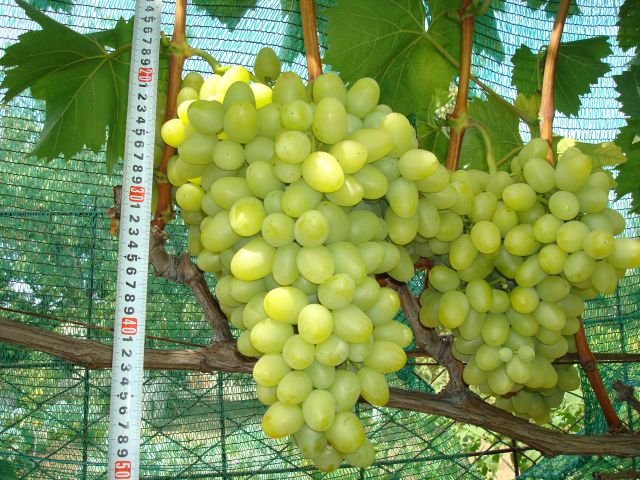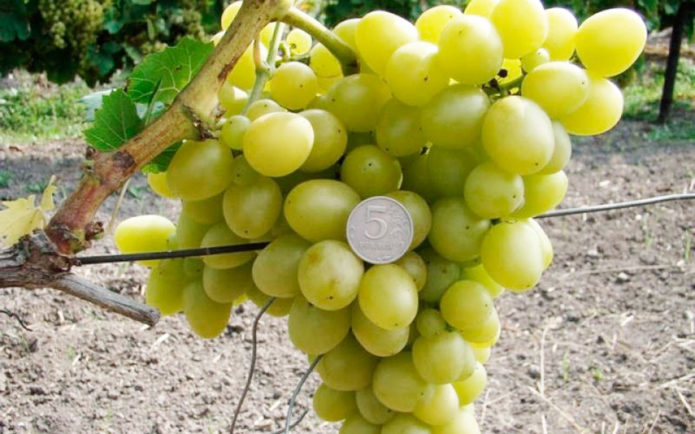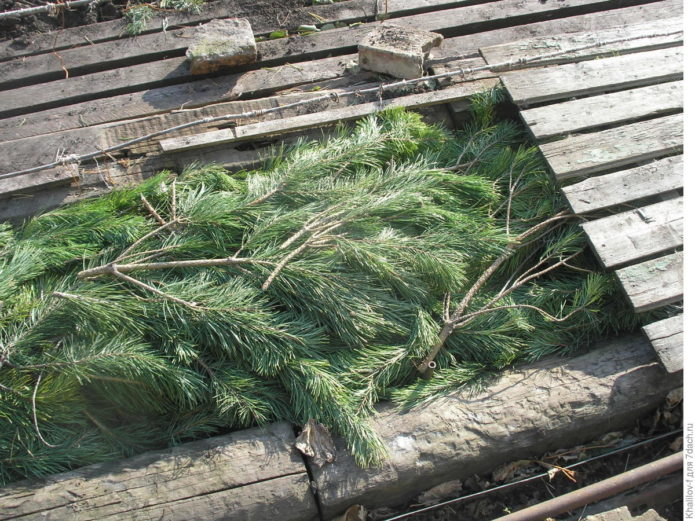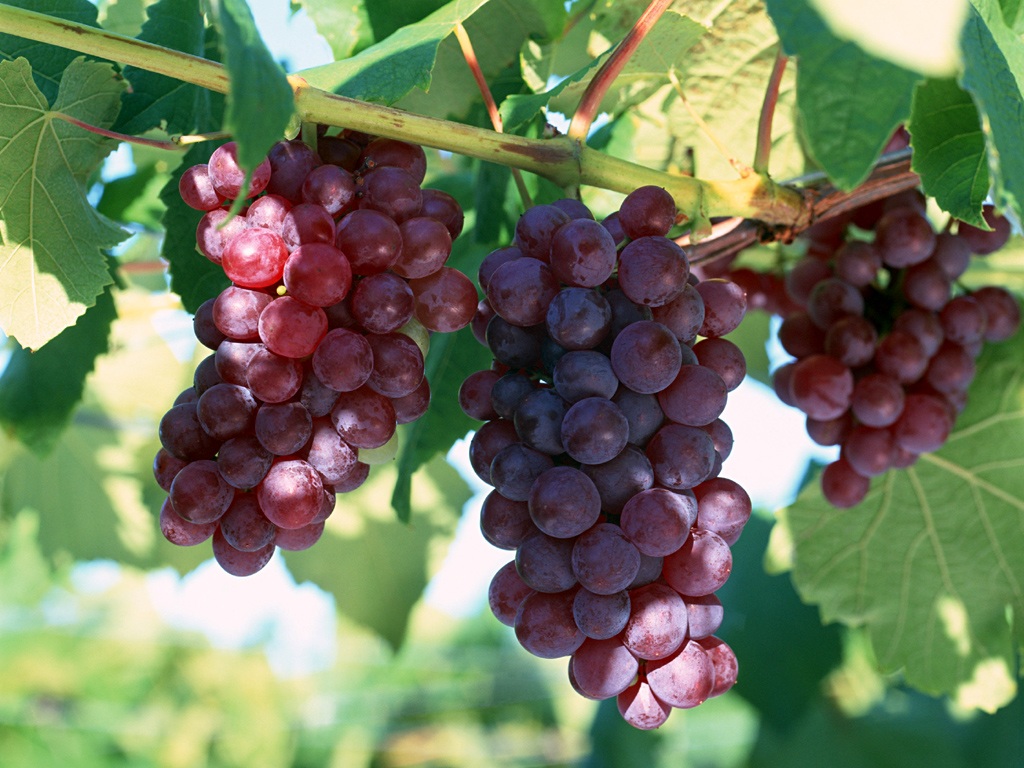Arcadia is a unique grape variety: dozens of new developments appear every year, and he, a native of Soviet times, is still among the top ten grape varieties in the world assortment. Due to its harmonious dessert taste and unpretentiousness to growing conditions, Arcadia rightfully occupies a worthy place both in the gardens of ordinary summer residents and in the vineyards of large farms.
Content
The history of breeding, description and characteristics of the Arcadia grape variety
The popularity of the Arcadia variety is evidenced by the fact that it is known and successfully grown even in the most “grape” country - France, whose inhabitants are well versed in the qualities of grape berries and the characteristics of grape plants. The hybrid form of Arcadia grapes (often also called Nastya) appeared during the existence of the Soviet Union and is still one of the most beloved in the territory of all the countries that were part of it.
Arcadia was bred by the breeder Evgenia Nikolaevna Dokuchaeva at the V.E. Tairov Institute of Viticulture and Winemaking (Odessa) by cross-crossing the Cardinal and Moldova grape varieties. Both of its "parents" are table varieties.
It is worth saying that several more grape varieties were derived from the same initial forms, but Arcadia is the best in this collection, the most famous of all.
His Eminence - Cardinal Grape:https://flowers.bigbadmole.com/en/yagody/vinograd/vinograd-kardinal-opisanie-sorta-foto.html
With the participation of E. N. Dokuchaeva, who was born in 1926 in Michurinsk, Tambov region, more than 60 grape varieties were bred, most of which are included in the Register of Varieties of Modern Ukraine or patented. And the breeder herself was awarded high Soviet awards - the Orders of Friendship of Peoples, the Badge of Honor, the Red Banner of Labor.
It is interesting to note that the "parents" of Arcadia bear fruit with dark berries. But their daughter (after all, a daughter, after all, Arkadia, not Arkady) is a classic white-fruited variety. Your deeds are wonderful, madam genetics!
Arcadia is an early grape variety, deservedly one of the record holders in terms of yield. The berries are famous for their excellent taste, the plants themselves are unpretentious in cultivation, quite frost-resistant.
Bushes, depending on the region of planting and growing conditions, are from medium to vigorous. The number of shoots on which flowers are tied and berries grow is from half to 75% of their total number. Under normal weather conditions, the shoots have time to ripen over the summer almost to their entire length, and the length can be quite rather large, which should be taken into account when pruning, and even better to pinch especially long young shoots still green as soon as they reach a height of 1.5–2 meters. The leaf plates are five-lobed, slightly pubescent on the underside.
Moldova is a fruitful and reliable grape variety that was entered in the State Register of Breeding Achievements of the Russian Federation back in 1974https://flowers.bigbadmole.com/en/yagody/vinograd/vinograd-moldova-opisanie-sorta-foto.html
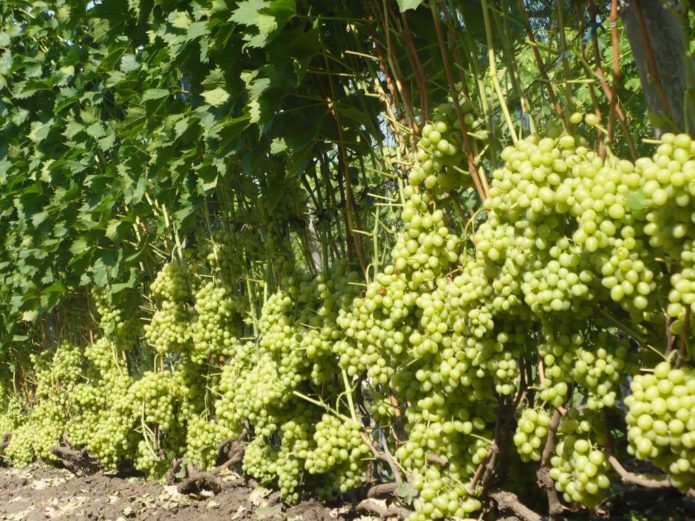
The bushes of Arcadia sometimes grow gigantic, but what word can you call the amount of harvest that they can keep?
The variety is quite frost-resistant, which allows it to be grown both in the south and in central Russia. But in conditions different from southern ones, it necessarily requires light shelter for the winter, since it is guaranteed to withstand frosts only up to -21 aboutC, and subject to excellent agricultural technology - only a couple of degrees more. It has good resistance to various diseases, but requires preventive spraying, after which it is almost not affected by mildew and powdery mildew.
Arcadia is famous for its extremely high yields, and if the load is not rationed, all the fruits have time to ripen. However, this has a very negative effect on the condition of the plant.
Vines overloaded with harvest do not ripen by autumn and, as a result, die almost their entire length, which leads to a sharp decrease in the total yield for the next year. But even a completely dead aerial part of the bushes, provided the integrity of the root system, is quickly restored. New shoots growing from the roots in the very first year practically restore the bush to its previous state, and after another year you can harvest the same crop in volume.
The variety is early, but not very early: it takes about 4 months from awakening the buds to harvesting, so when growing grapes in the middle lane the main collection of berries takes place in September; in more southern regions, the first berries ripen by mid-August. The bunches of Arcadia are very large, have a variable shape: on the same bush, there can be conical, cylindrical, and “winged” specimens, but they are all highly branched. The structure of the bunches is of medium density: you can see both quite well-packed berries and loose, not very large ones. But rarely does a bunch weigh less than half a kilogram. With good care, the average weight is about 800 g, but often clusters weighing up to two, or even three kilograms grow.
Arkadia's flowers are bisexual, therefore, it can grow and bear fruit separately from other grape varieties: no external pollination is required, and its flowers are almost 100% pollinated. On the contrary, Arcadia is an ideal pollinator for some other varieties, for example, very popular with Laura and Talisman gardeners.
The berries are often round in shape, but almost always grow somewhat elongated and even ovoid. The diameter of the berry is from 25 mm and more, up to 35 mm, weight is from 8 to 15 g. The flesh is fleshy, very juicy, the skin is thin and inconspicuous. In a state of technical ripeness (when they are already completely edible and can be harvested), they have a yellow-white color, and when fully ripe, they turn into amber-yellow, covered with a white waxy coating. The taste of the berries is amazing. The main thing is that it has a very well balanced content of acids and sugars, which allows you to eat an incredible amount of them. The sugar content does not exceed 16%, and the total acidity is 5–6 g / l. Therefore, for those who are afraid to gain weight, this is one of the most suitable grape varieties. The berries emit a subtle nutmeg aroma when consumed.
Due to the chemical composition of the berries, Arcadia is a variety intended primarily for fresh consumption. And it's a pity to let it be recycled! At the same time, something must be done with the huge harvests. The keeping quality of the berries is good, the transportability is also decent, but after all, an average family simply cannot eat so much: up to 40 kg of berries can be harvested from one bush. In the refrigerator at a temperature of about 0 aboutSince they are stored for up to 3 months, but where to get such a refrigerator?
Of course, you can squeeze the juice, boil the compote, dry the raisins. But Arcadia is not at all suitable for making wine. It would be more correct to say that there is no wine from it. Of course, the juice ferments normally, but the taste of the resulting product is quite mediocre. At least, the author of these lines, who for many years has been making homemade wine of good quality from the "waste" Lydia and Isabella, could not get anything decent from Arcadia for a long time. And only then I read in the relevant literature that it is not worth trying. Well, okay: sorry for such a charm for wine!
In connection with the characteristics noted, it becomes clear that the Arcadia variety is in exceptional demand both among summer residents and farmers who grow grapes for commercial purposes.
What grape varieties can be planted for making wine:https://flowers.bigbadmole.com/en/yagody/vinograd/sorta-vinograda-dlya-vina.html
Video: a story about the grapes Arcadia
Features of planting and growing grape varieties Arcadia, including in central Russia
Even novice summer residents can plant Arcadia on their site, since caring for these grapes is very simple. Neither the planting rules nor the basic principles of cultivation differ from those in the case of other table varieties.
For the author of these lines, many, many years ago, Arcadia became the first "real" variety on a summer cottage north of Saratov, except for "weeds" like Isabella and Amursky, which grow by themselves without any care, and when trying to radically cut them they only grow even faster. And no problems with Arcadia (aka Nastya) arose from the very beginning.
Like any grape, Arcadia loves sunny areas, sheltered from cold winds. It is desirable that from the most problematic side the bushes are protected by a wall of a house or a high blank fence. Buying a seedling from Arcadia is not a problem, only it should be done not “on the road”, but from sellers, at least who have any documents for the goods. Otherwise, you can plant the same Isabella and make wonderful wine out of it, but not eat delicious berries. But Arcadia reproduces very easily by cuttings, the survival rate of which is almost one hundred percent. Therefore, if you take a stalk from your neighbors, you can grow the seedling yourself. At least every fall, you have to cut the cuttings in batches, since the number of people who want to plant Arkadia does not decrease. Well, when choosing a seedling, the main thing is that it has healthy roots. Immediately before planting, it must be put in water for a day, slightly cutting off the tips of the roots so that the seedling is saturated with moisture. You can plant grapes in the fall, but much safer - in April.
For spring planting, the pit should be ready in the fall. And first, in the summer, a selected area of several square meters must be dug up with fertilizers (manure, ash, superphosphate), simultaneously removing perennial weeds. Dig a large hole in the fall. When buying a seedling, an experienced grower advised to dig a hole up to a meter deep. It is very difficult to do this, especially in clay, but you have to try at least 80 centimeters. And the same in diameter. Drainage at the bottom (15–20 cm of rubble or broken brick) is absolutely necessary. At the bottom of the pit, a layer of fertilizers mixed with good soil should be laid, and in this layer (20–25 cm) there should be more humus than earth, as well as half a bucket of ash and half a kilogram of azofoska. And above, where young roots will be, only pure fertile soil!

The planting pit should be large, at the bottom a layer of pebbles, gravel or other material for drainage is required
If the soil is not sandy, a piece of a thick pipe must be drawn to the bottom of the pit so that in the first years it is not the top layer of the soil, but the roots that need to be watered. Mature trees, having spread their roots in all directions, will already find moisture for themselves and will not need much watering. In addition, you need to drive in a stake to tie up shoots in the first year (then a strong trellis will replace the stake). It is necessary to plant deeply so that no more than 2 buds remain on the surface. Even the only one, at ground level, is enough for the seedling to grow quickly. Watering the seedling well, it is necessary to mulch the soil around it.
Caring for Arcadia is simple: watering, fertilizing, garter shoots, pruning, preventive treatments. It seems like a lot is being recruited. But everything, except for pruning, does not require special knowledge. But pruning grapes is an art. However, it is impossible without it: the harvest will only get worse every year.
Excess water is not needed, but periodic watering is required, especially in arid regions. The need for water is especially great during the growth of berries, but from the end of July watering Arcadia must be stopped: let the berries gain sugar and become tasty. And, in the case of dry, autumn, - winter watering shortly before the bushes shelter for the winter. It is mainly necessary to feed ash: a couple of liters annually under a bush and bury it slightly. Once every two years, in early spring, put a pair of compost buckets in shallow holes along the periphery of the bush. And 2-3 times during the summer - foliar dressing by spraying the leaves. Before flowering and immediately after it - with weak solutions of complex mineral fertilizers, after another 2-3 weeks - only with potassium and phosphorus fertilizers.
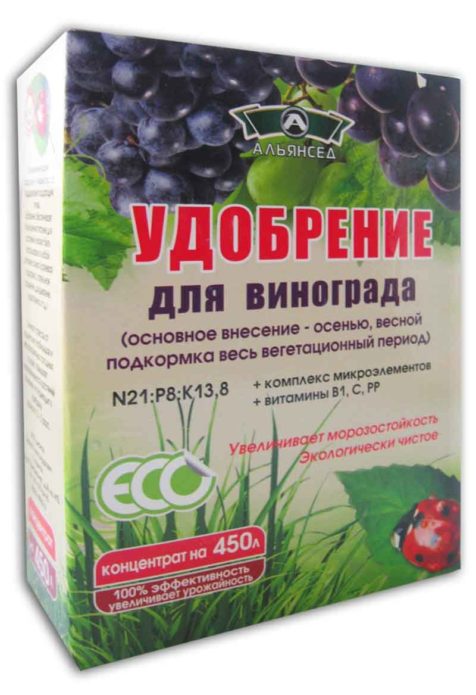
For foliar dressing, it is convenient to use ready-made fertilizer mixtures, which are in abundance on the shelves
Arcadia is quite resistant to mildew disease, but for prophylactic purposes, early spring spraying with a solution of ferrous sulfate will not hurt. But oidium is a scourge of the variety, especially in rainy years, because of it you can lose a lot of berries, and it will be a pity to throw them away. Therefore, when 3 leaves appear on the shoots, it makes sense to spray the vineyard with Ridomil Gold. Strobi and Topaz help well against other ailments.
All norms and methods for preparing solutions are detailed on the packaging of the preparations. They must be observed strictly. And the precautions when working with pesticides - even more so.
In early spring, before the start of sap flow, you can carry out a small pruning of vines. The trouble is that Arcadia begins to "cry" quite early, so many summer residents are late with this operation. Much safer cut grapes in autumnbefore sheltering the bushes for the winter. But the main work on normalizing the bush from unnecessary shoots, stepchildren and, unfortunately, bunches must be done in the summer, while the cut-off areas are still green and small: on each shoot, in an amicable way, you need to leave only one bunch. If you work hard in the summer, it will be much easier in the fall. The total load on the bush should be no more than 55 eyes.
Before the onset of frost (approximately at the end of October), all vines must be removed from the trellises, lightly tied into bundles convenient for handling them, and covered with any suitable materials on the ground. In not very harsh regions, spruce or pine spruce branches or dry foliage are suitable for this, in more northern regions they try to use non-woven materials or old clothes. The trouble is that under such a shelter mice feel good, eating the bark and, unfortunately, very close to the roots. As a result, the entire aboveground part of the bush perishes. Therefore, in the case of a serious shelter, it is imperative to lay out pesticides for rodents under it.
Arcadia ripens perfectly not only in the south, but also in the conditions of central Russia. It is only necessary to take into account that the temperature limit of Arcadia is closed here almost every winter, so the shelter of the bushes for the winter period should be reliable. If a solid layer of snow falls, then nothing else is needed: the vine is warm under the snow. But often frosts come to bare ground. Therefore, the challenge is to preserve the bushes until snow sets in. This means that you need a lot of spruce branches, and it is worth tying bunches of vines with them from all sides, and adding burlap on top. Just don't need plastic wrap! Damping out vines is no better than freezing. The rest of the agricultural technology of growing Arcadia in the middle climatic zone is no different from that described above.
Advantages and disadvantages of the variety in comparison with similar
It is difficult to say with which grape varieties Arcadia should be compared.Of course, for any feature, you can find the best and worst varieties, but by the totality of features, it is one of the best. So, there are varieties of earlier ripening, varieties with larger berries. There are berries with a high sugar content, a long shelf life. There are bushes that are less susceptible to diseases and more frost-resistant. But there are no ideal varieties and probably never will be. And in Arcadia, consumer properties are very well balanced, which makes it possible to recommend it for growing to every summer resident or farmer.
The indisputable advantages of Arcadia include:
- excellent, unique berry taste;
- interesting appearance, including shape and color;
- the size of both individual berries and bunches in general;
- long-term preservation of the crop;
- high transportability of bunches;
- early ripening of the crop;
- very high yield (up to 40 kg per bush);
- buncation of flowers, which does not require planting in the neighborhood of bushes of another grape variety, acting as a pollinator;
- high frost resistance, allowing the bushes to winter under light shelter even in the middle lane;
- good rooting rate of cuttings (up to 90%), allowing easy propagation of grapes;
- ease of growing;
- resistance to mildew.
Like any grape, it also has disadvantages, and very significant ones:
- tendency to infection with gray rot and powdery mildew without special treatments;
- tendency to cracking berries when the soil is waterlogged.
Arcadia, perhaps, has no other serious shortcomings. According to most indicators, the variety occupies leading positions among grape varieties of early ripening. And the advantages discussed above make its cultivation also economically profitable.
Video: Arcadia berries on the bushes
Reviews
During the existence of Arcadia, a huge number of reviews have accumulated about it; separate branches have been opened on specialized forums. Opinions vary, but mostly the variety is described with admiration.
Victoria, what can be a wine from Arcadia. The answer is no. Arcadia is the most unsuitable variety for winemaking, since it differs in that it has a not very high sugar content with a fairly decent taste, all this due to a rather low acidity. That is, the sugar content is up to 15%, and the acidity is about 3 grams per liter. And for wine, grapes with a sugar content of about 20 and an acidity level of 6-8 g / l are required, and higher is possible. That is, you get neutral water. FI, that's the taste.
Today we ate large green raisins from the store - in no way is it better than my Arcadia. Yours is many times tastier and healthier. Arcadia can ripen with us - both a berry and a vine (the weather in September would not disappoint). You just need to help her. I have - this is the sunniest place, black mulch, chasing in mid - late August, all the bunches in the sun.
Arcadia is my very first grape bush that I planted. This year it gave its first harvest. At first I was fascinated by the size of the bunch and everything else, but after I tasted Muscat summer, Arcadia seemed to me some kind of bland. For the markets, this is probably an amazing variety, but for my taste I liked the summer Muscat better.
I have the first fruiting of Arcadia, 18 shoots, 13 clusters, the third year of the bush. The smallest bunch is 1.5 kg, the largest is more than 3. The vine ripened perfectly. There was a light nutmeg, however, not in all berries. The rains rinsed heavily, cracked a little, the pulp was thin and the sugar fell, but still delicious. Frankly, I was shocked, did not expect such a harvest.
“How many times have the world been told… that Arcadia is one of the most reliable varieties, but… I still want to praise her again: in such a nightmarish year for our area, she“ carries and carries ”her beautiful burden. That's really, Truly SORT!
Arcadia is an early grape variety that the majority of summer residents seeks to grow on their site; it is also planted in large agricultural enterprises. The combination of positive qualities inherent in both the bushes in general and the marketable product - the berries themselves - make it popular among a wide range of winegrowers and ordinary amateurs.
